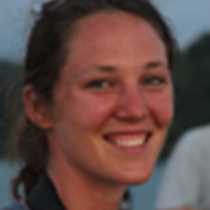Coiba National Park
Today was a beach day. After traveling all night from the Gulf of Panama and around the Azuero Peninsula, we arrived early at a small gem of an island called Granito de Oro, or Little Grain of Gold. Granito de Oro is a small islet located in Panama’s magnificent Coiba National Park, which is also the third largest marine park in the world, second only to the Great Barrier Reef and the Galápagos. The island consists of a large, white, sandy beach, a few palm trees, some rocky outcroppings, and hundreds, if not thousands, of hermit crabs. We brought ashore some beach chairs, refreshments, flotation noodles, snorkels and masks, and kayaks and prepared for a day of swimming and enjoying the clear, refreshing water of Coiba National Park.
The largest island in the park, also known as Coiba, is unique because in the 1970’s the island was used as one of Panama’s most stringent penal colonies complete with several prison camps. Tourists were not allowed to visit the island, so no development in terms of resorts, hotels, or homes were established. As a result, the forests and reefs remained untouched and pristine. When scientists and researchers started doing studies in the areas, they found that there were three times more predators compared to other areas that were not protected. That meant that there was a lot of food and wildlife diversity present to support such high numbers of predators. The government decided to shut down the prison on Coiba and in 2000, 271,000 hectares were established as a National Park, only 51,000 of which is mainland, the rest is marine area.
This morning we had the opportunity to experience the high diversity of marine life and healthy coral reef present in Coiba. Snorkeler’s caught sight of a variety of different fish such as sergeant majors, damselfish, parrot fish, and many more. In the afternoon guests had the option to return to the beach for more snorkeling and swimming or to stretch their legs on the Monkey Trail located across the channel on Coiba Island. There we saw great sightings of the rare lance-tailed manikin and crimson-backed tanager.
We returned to the ship in the late afternoon and after the National Geographic Sea Lion picked up anchor, we continued on our way. We were soon joined by several dolphins who entertained us as the sun set by playing in our wake. Tomorrow we will wake up in Costa Rica!




